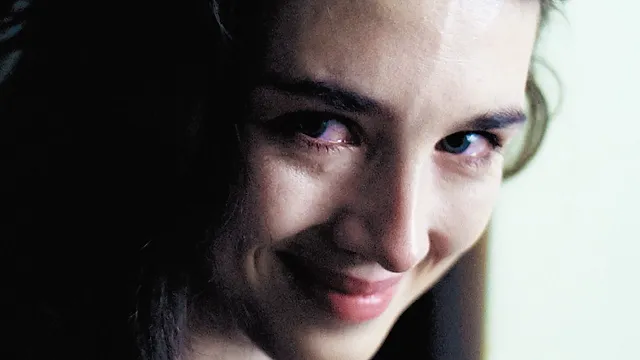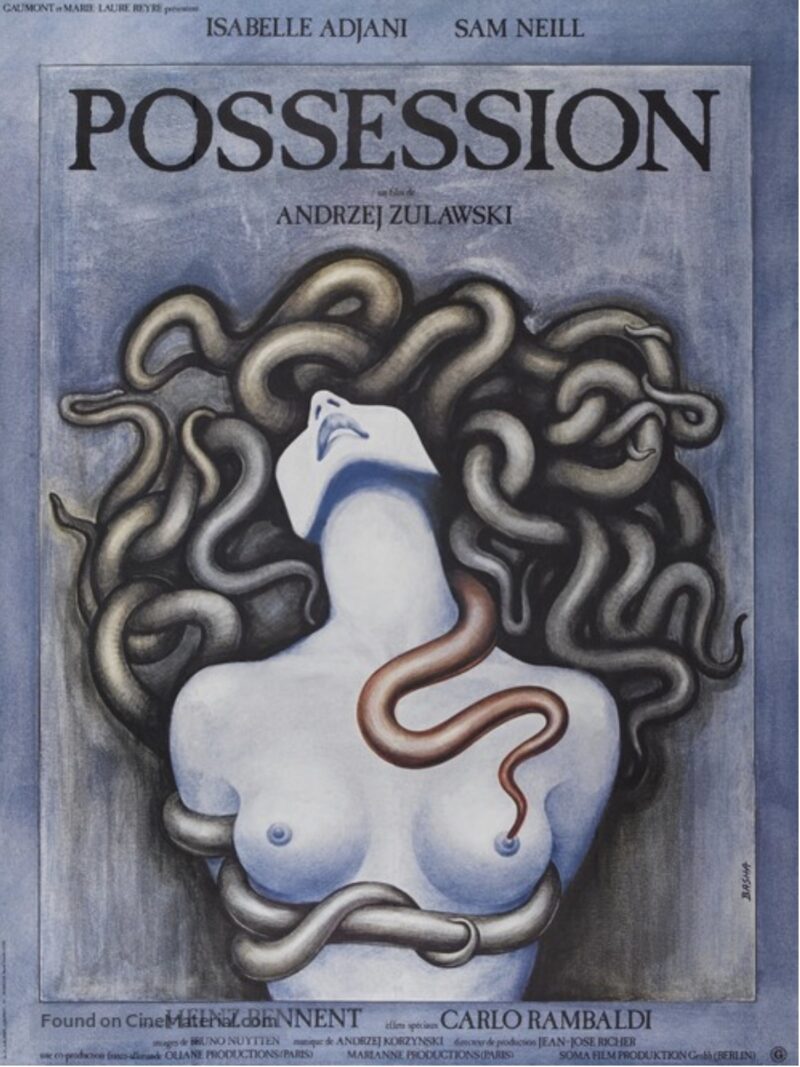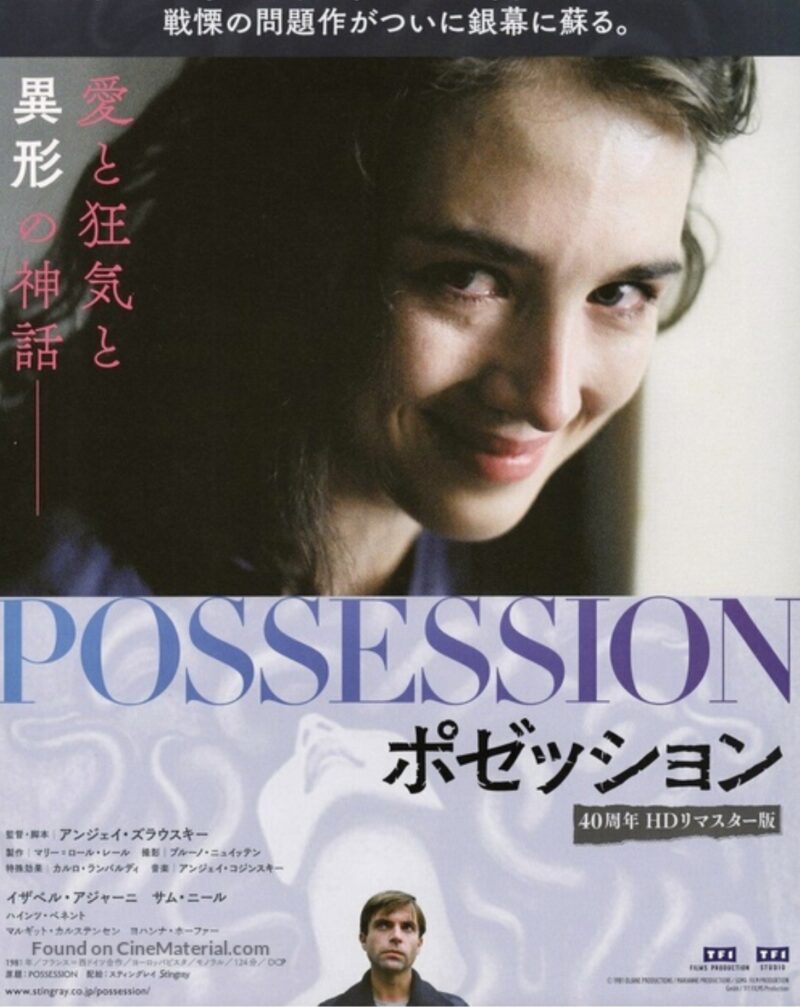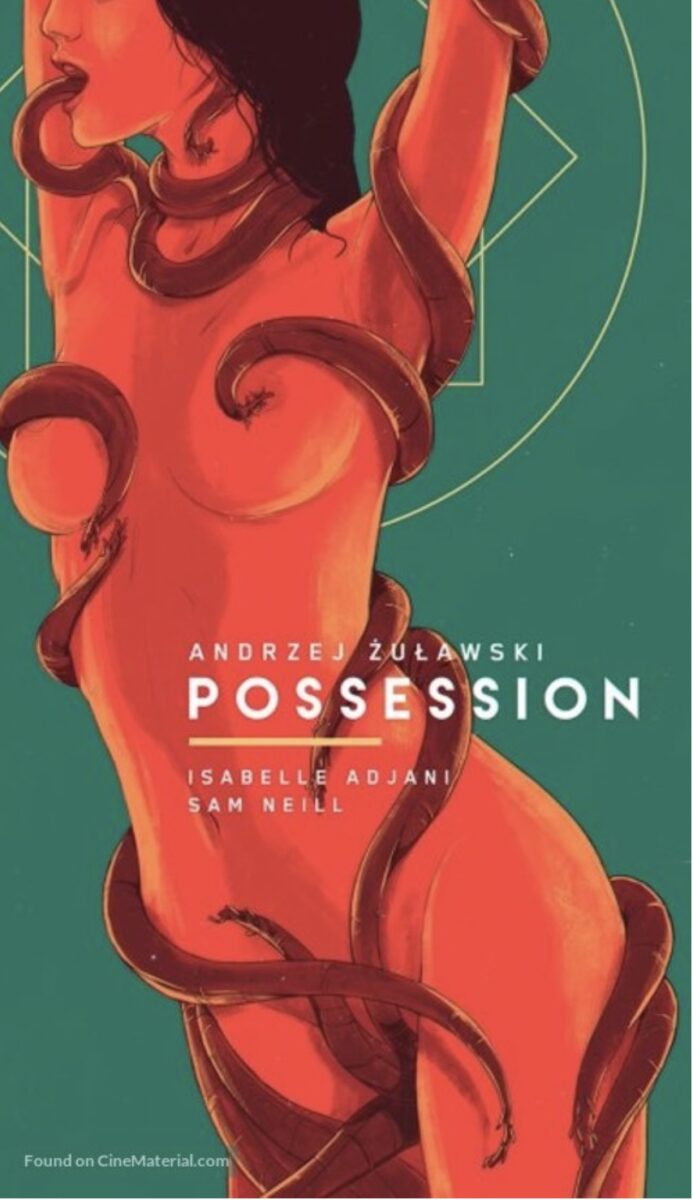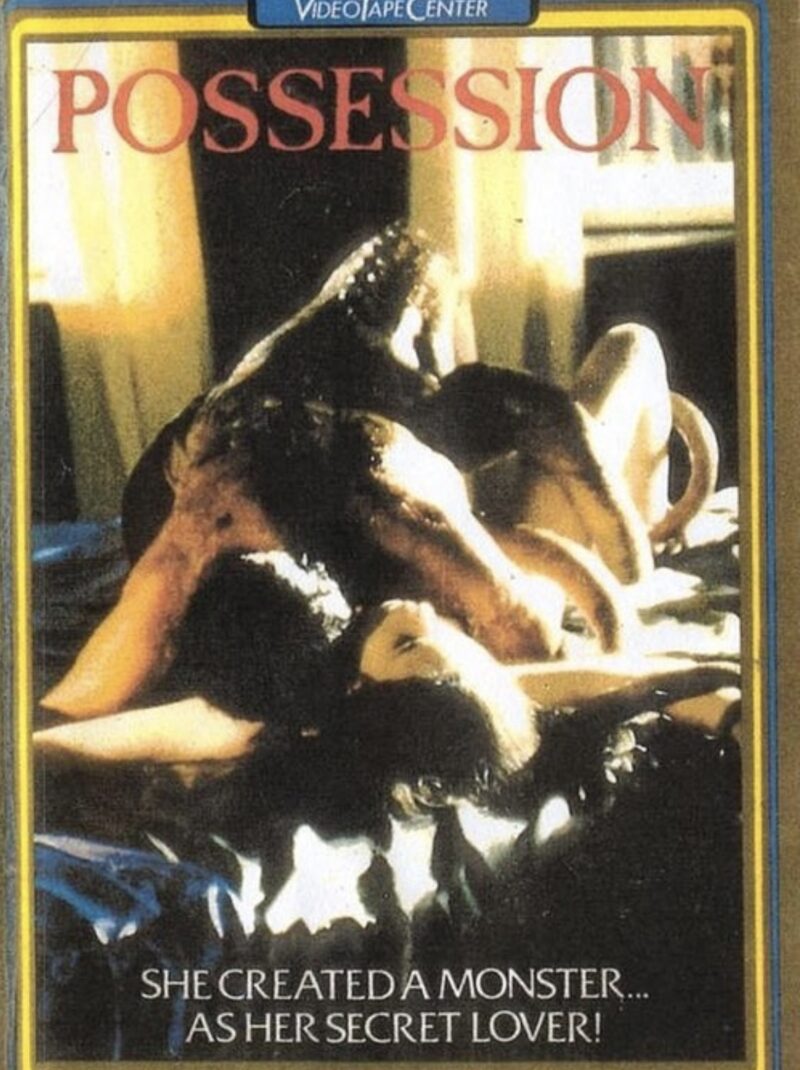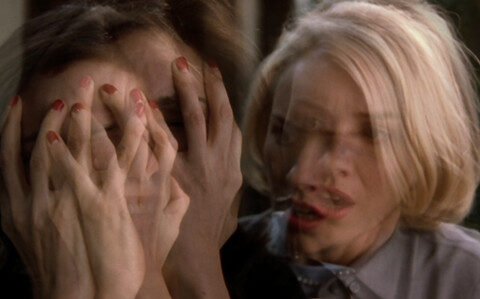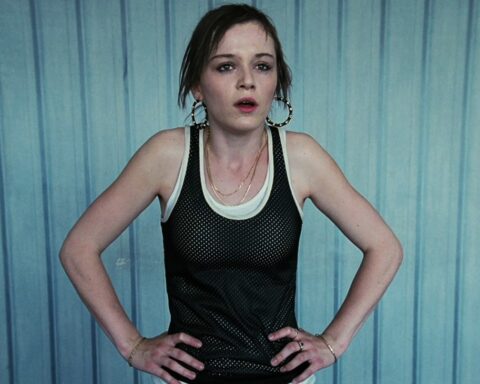Possession (1981)
Andrzej Zulawski’s cult horror film, a joint production of France and West Germany released in 1981, sparked intense debates upon its release and has since held a significant place in cinema history as a production that influenced many subsequent films. The film revolves around Mark (played by Sam Neill), a mysterious spy, as he struggles to save his wife (Isabella Adjani), who becomes increasingly influenced by a dark force, and their marriage, which turns into a nightmare. While the film is said to have been influenced by films such as Scener ur Ett Aktenskap (1974), The Brood (1979), Eraser Head (1977), and Le Locataire (1976), it is more conclusive to interpret it as a reflection of the obsession of Europe at the time with questioning the institution of marriage. The film was made before the fall of the Berlin Wall, and the buildings and streets depicted in the film, reflecting West Germany at the time, create an atmosphere of extreme insecurity and gloominess. Looking at the atmosphere of the 80s, it’s evident that due to the bold scenes in the film, it was categorized as a “Video Nasty” amid the “Moral Panic” chaos of the time. Many scenes were cut for the film to be released, resulting in its recognition only years later, hence labeling Possession as a “cinema martyr” might not be an exaggeration, given its impact and eventual acceptance as a groundbreaking work.
The term “Possession” in the film’s title refers to a psychological condition where one believes there is external control or influence over their behavior or thoughts, often associated with paranoia or similar psychological issues. In Turkish, apart from “posesyon” (possession), there is no direct equivalent to this term. The choice to translate the title as “Saplantı” (Obsession) is quite appropriate considering the general progression of the film.
When discussing the elements that contributed to the film’s cult status, it would be remiss not to mention Isabella Adjani’s extraordinary portrayal of the character Anna with her angelic beauty. Scenes like the one in the subway, which Adjani likened to “psychological porn,” showcase her brilliance. Adjani’s ability to deliver such a performance with just a directive like “F*ck the Air” from director Zulawski is exceptional. Additionally, accidents on set, rumors of suicide attempts after filming, and deaths of crew members afterward, albeit unfortunate, contribute to the eerie atmosphere often sought after in horror films. Another familiar face in horror films, actor Sam Neill, also makes a significant impact with his portrayal of Mark, especially as the possession takes over in the later parts of the film. It’s worth noting that the film, also written by Zulawski, carries traces of his real-life separation and the suspicions that led him to the brink of psychological turmoil.
Returning to the main character, Mark, who gradually succumbs to delusional fantasies driven by jealousy, we find clues scattered throughout the film that piece together the narrative of his former “normal” life. Details such as the question posed during his job interview about whether the interviewer always wears pink socks may seem insignificant at first but later tie into the plot when Mark encounters one of the interviewers on a bridge wearing pink socks. The character Heinrich, imagined by Mark, represents his deepest fears and desires, serving as a manifestation of his delusions. The punishment methods concocted by Mark’s imagination, aside from being grotesque, delve into the realm of madness, revealing his inner turmoil.
Regarding the creature in the film, although there was a desire to collaborate with H.R. Giger, known for his work on Jodorowsky’s Dune and Alien creatures, logistical issues led to working with Carlo Rambaldi instead. The functionality of the phallic creature becomes evident in the film’s climax.
The religious reference in the final staircase scene, reminiscent of Jacob’s Ladder in the Bible, adds another layer of complexity. When Mark reaches the top of the stairs, symbolizing Jacob’s ladder, he undergoes a transformation, shedding his former self and embracing his demonic alter ego, leaving behind the remnants of his past life with Anna.
As with any great film, interpretations may vary among viewers, and hence, issuing a spoiler warning may not be entirely meaningful. However, the execution of the film is flawless. The camera’s dance with the actors during the dialogue scene between Mark and Anna in bed is a testament to this. Additionally, the tension-building element of the rocking chair, later a staple in many horror films, likely finds its earliest example in this film. The film also features numerous powerful scenes, such as the iconic moment when madness first manifests in Anna’s eyes, the subway scene with milk, blood, and urine, the scenes involving meat cleavers and grinders, the overhead shot of the revolving staircase, and, of course, the scene with the creature on the bed.
Today, fans of the film still visit all the locations, including the famous address Sebastianstrasse 87, featured in the film. A comparison of the current state of these locations with their appearance in the film can be found here. Finally, the posters and VHS covers from the time the film was released, containing clues about the cultural atmosphere of that period, are also noteworthy, considering that over forty years have passed since the film’s release.
In a French movie poster as beautiful as a work of art, the illustration features a beautiful and naked woman. Snakes resembling Medusa are both a part of the woman and a creature that has captured her. Particularly striking is the snake entering the tip of the breast, hinting at a provocative reference to motherhood. The sin that poisons motherhood is depicted as a terrifying creature, both enslaving the woman and deriving pleasure from this enslavement.
In the American poster used for the screening, the striking beauty of the lead actress Isabella Adjani’s hidden dark back draws attention. The reference to sexual desire with the naked female body is reinforced by the slogan “Inhuman ecstasy fulfilled” placed just below the movie title. Translating this, we can interpret it as “fulfillment of inhuman pleasures.” It’s a very successful representation of a woman’s betrayal of her marriage and the emergence of her desires as the deepest fears. When viewed from this perspective, the horror of the beloved woman’s betrayal, intertwined with a pure love reinforced by marriage, is truly striking.
In the Japanese poster for the screening, the reference to sexual desire is replaced by a mixture of madness and sorrow in the eyes of the film’s main subject, the woman. The woman, invaded by her desires, displays symptoms of mental illness. Her struggle with herself is prominent. Although the background subtly reveals the presence of Medusa and the snakes, this time the man in the victim role has also found a place in the poster with his helpless state.
In the Italian poster, similar to France, a snake illustration is used, but the snake is not a horror element; it is more like the instrument of an exotic female dancer. In this provocative poster as well, the woman is seen in a sensual state, enjoying the sin beyond being terrifying.
Although the visual on the VHS cover in the United Kingdom lacks aesthetic appeal, as expected, it still contains elements of horror and heavy sexuality. The slogan this time reads “She created a monster as her secret lover!” The woman is depicted in a scene devoid of innocence, lying in bed with a creature.
It’s hard to even say that the visual prepared for the Brazilian VHS cassette covers belongs to the film. Showing none of the main characters, it depicts a classic horror film scream and a dead man on straw. It can probably be considered one of the ugliest things created for the film.
If we conclude with Russia in the poster and cover section, in this scene offering romance and tragedy, neither a woman enslaved by terrifying desires, nor a reference to sin or the fulfillment of pleasure can be seen. It’s ironic to observe even in the poster of such a film the melancholy nourished by Russian culture from that perspective. (7)

